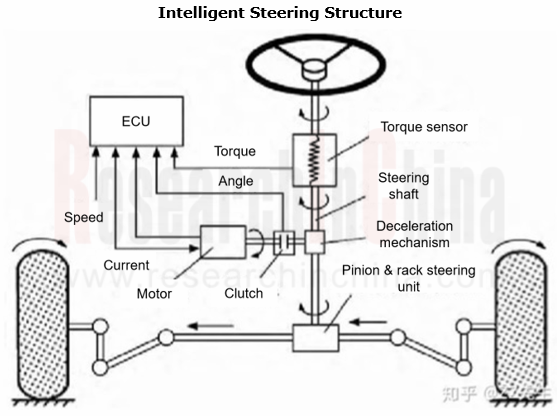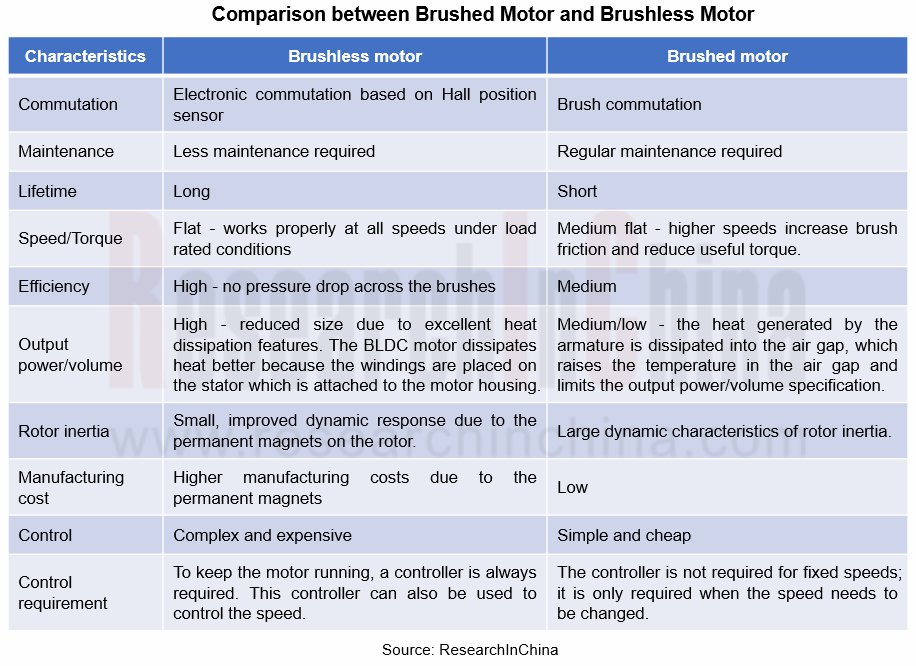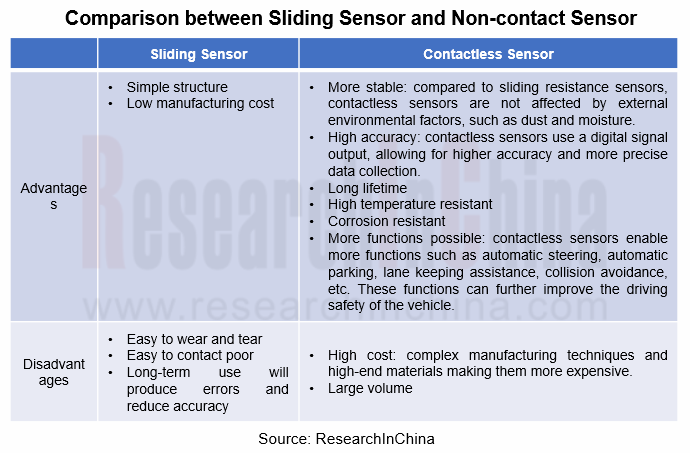Research on intelligent steering key components: four development trends of intelligent steering
The automotive chassis consists of four major systems: transmission system, steering system, driving system and braking system, covering five major parts: drive, gearshift, brake, suspension and steering. Wherein, the steering system passes through the development process from mechanical steering to hydraulic power steering to electric power steering. Nowadays, as intelligent driving technology advances, intelligent steering, namely, electric power steering as an important part of intelligent chassis, is becoming widespread, and steer-by-wire that develops from electric power steering is also being applied.
Based on conventional mechanical steering systems, electric power steering system adds sensor, electronic control unit (ECU) and power steering mechanism, and generates power by controlling the electric motor to achieve steering, which is completely free from the hydraulic power method. The key components of this system are torque sensor, motor and ECU, of which:
?The torque sensor is used to measure the magnitude and direction of the torque applied to the steering wheel by the driver, and to convert the torque into an electrical signal sent to the ECU.
?The electric motor converts the electric energy provided by the battery or generator into mechanical energy, outputs the appropriate torque to the mechanical steering mechanism, and together with the steering gear offers the steering torque to the steering wheels.
?Based on the signals from the speed and torque sensors, the ECU determines the direction of rotation of the motor and the magnitude of current of the booster, so that the motor can provide power steering effects according to vehicle speeds.

Trend 1: steer-by-wire will gradually replace electric power steering
The main difference between steer-by-wire (SBW) and electric power steering (EPS) is that SBW removes the mechanical connection between the steering wheel and vehicle wheels and uses sensors to obtain the steering wheel angle data, and then the ECU converts the data into specific driving force data, so that the electric motor can drive the steering gear to turn the wheels. The EPS, on the other hand, uses an electric motor to assist the driver in steering.
SBW outperforms EPS in response sensitivity and expansibility of intelligent driving functions. SBW not only has all the advantages of conventional mechanical steering systems, but also can optimize angular transmission characteristics, which is difficult for a mechanical system. By virtue of these benefits, SBW systems have become a development trend in the automotive industry.
Trend 2: the gradual shift from brushed motors to brushless motor
Brushless motors generate no electric sparks while running, its most direct difference from brushed motors, which minimizes the interference of electric sparks to remote control on radio equipment. Secondly, without brush, brushless motors enable much less friction, smooth operation, far lower noise and higher operational stability when they run. Thirdly, having no brushes means the wear of brushless motors is concentrated on the bearings. From a mechanical prospective, brushless motors are almost maintenance-free, only needing some dust removal maintenance when necessary. In the long run, brushless motors will thus gradually replace brushed motors.

Trend 3: the transition from sliding variable resistance sensor to non-contact sensor
Sliding variable resistance sensors are a relatively conventional type of sensor. Despite high maturity, this sensor technology also has problems of unstable performance and short service life caused by wear and ageing of the sliding contact surfaces. In contrast, non-contact sensors offer following benefits:
1.Longer service life for insusceptibility to wear and ageing;
2.Higher levels of accuracy and stability;
3.Available in harsh environments, e.g., high temperature and high pressure;
4.Small size, light weight, easy to install and maintain.
Hence non-contact sensors are expected to replace sliding variable resistance sensors and dominate the market in the future.

Trend 4: 32-bit MCUs are replacing 8-bit/16-bit MCUs.
8-bit, 16-bit and 32-bit products prevail in the automotive MCU market. 8-bit MCUs are mainly used for controlling basic functions such as seat, air conditioner, fan, window, and door control module. 16-bit MCUs are generally applied to lower body covering power and transmission systems like engine, e-brake and suspension system. 32-bit MCUs customized for vehicle intelligence are often seen in automotive power system, intelligent cockpit and body control.
In addition, steering system control units are almost monopolized by foreign manufactures such as JTEKT, NSK Ltd, ZF TRW, Nexteer and Sono Koyo Steering, and they are capturing bigger market shares by way of establishing joint ventures and partnerships. For example, the four companies, Aisin, ADVICS, JTEKT and Denso, have respectively combined their competitive hardware such as sensors, steering and brakes with integrated ECUs and established integrated ECU software development companies.
China Passenger Car Cockpit Multi/Dual Display Research Report, 2023-2024
In intelligent cockpit era, cockpit displays head in the direction of more screens, larger size, better looking, more convenient interaction and better experience. Simultaneously, the conventional “on...
Automotive Microcontroller Unit (MCU) Industry Report, 2024
With policy support, the localization rate of automotive MCU will surge.
Chinese electric vehicle companies are quickening their pace of purchasing domestic chips to reduce their dependence on impor...
Automotive Digital Key Industry Trends Research Report, 2024
Automotive Digital Key Industry Trends Research Report, 2024 released by ResearchInChina highlights the following: Forecast for automotive digital key market;Digital key standard specifications and co...
Automotive XR (VR/AR/MR) Industry Report, 2024
Automotive XR (Extended Reality) is an innovative technology that integrates VR (Virtual Reality), AR (Augmented Reality) and MR (Mixed Reality) technologies into vehicle systems. It can bring drivers...
OEMs’ Next-generation In-vehicle Infotainment (IVI) System Trends Report, 2024
OEMs’ Next-generation In-vehicle Infotainment (IVI) System Trends Report, 2024 released by ResearchInChina systematically analyzes the iteration process of IVI systems of mainstream automakers in Chin...
Global and China Automotive Lighting System Research Report, 2023-2024
Installations of intelligent headlights and interior lighting systems made steady growth.
From 2019 to 2023, the installations of intelligent headlights and interior lighting systems grew steadily. I...
Automotive Display, Center Console and Cluster Industry Report, 2024
Automotive display has become a hotspot major automakers compete for to create personalized and differentiated vehicle models. To improve users' driving experience and meet their needs for human-compu...
Global and China Passenger Car T-Box Market Report, 2024
Global and China Passenger Car T-Box Market Report, 2024 combs and summarizes the overall global and Chinese passenger car T-Box markets and the status quo of independent, centralized, V2X, and 5G T-B...
AI Foundation Models’ Impacts on Vehicle Intelligent Design and Development Research Report, 2024
AI foundation models are booming. The launch of ChapGPT and SORA is shocking. Scientists and entrepreneurs at AI frontier point out that AI foundation models will rebuild all walks of life, especially...
Analysis on Geely's Layout in Electrification, Connectivity, Intelligence and Sharing
Geely, one of the leading automotive groups in China, makes comprehensive layout in electrification, connectivity, intelligence and sharing.
Geely boasts more than ten brands. In 2023, it sold a tota...
48V Low-voltage Power Distribution Network (PDN) Architecture Industry Report, 2024
Automotive low-voltage PDN architecture evolves from 12V to 48V system.
Since 1950, the automotive industry has introduced the 12V system to power lighting, entertainment, electronic control units an...
Automotive Ultrasonic Radar and OEMs’ Parking Route Research Report, 2024
1. Over 220 million ultrasonic radars will be installed in 2028.
In recent years, the installations of ultrasonic radars in passenger cars in China surged, up to 121.955 million units in 2023, jumpin...
Automotive AI Foundation Model Technology and Application Trends Report, 2023-2024
Since 2023 ever more vehicle models have begun to be connected with foundation models, and an increasing number of Tier1s have launched automotive foundation model solutions. Especially Tesla’s big pr...
Qualcomm 8295 Based Cockpit Domain Controller Dismantling Analysis Report
ResearchInChina dismantled 8295-based cockpit domain controller of an electric sedan launched in December 2023, and produced the report SA8295P Series Based Cockpit Domain Controller Analysis and Dism...
Global and China Automotive Comfort System (Seating system, Air Conditioning System) Research Report, 2024
Automotive comfort systems include seating system, air conditioning system, soundproof system and chassis suspension to improve comfort of drivers and passengers. This report highlights seating system...
Automotive Memory Chip and Storage Industry Report, 2024
The global automotive memory chip market was worth USD4.76 billion in 2023, and it is expected to reach USD10.25 billion in 2028 boosted by high-level autonomous driving. The automotive storage market...
Automotive AUTOSAR Platform Research Report, 2024
AUTOSAR Platform research: the pace of spawning the domestic basic software + full-stack chip solutions quickens.
In the trend towards software-defined vehicles, AUTOSAR is evolving towards a more o...
China Passenger Car Electronic Control Suspension Industry Research Report, 2024
Research on Electronic Control Suspension: The assembly volume of Air Suspension increased by 113% year-on-year in 2023, and the magic carpet suspension of independent brands achieved a breakthrough
...